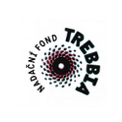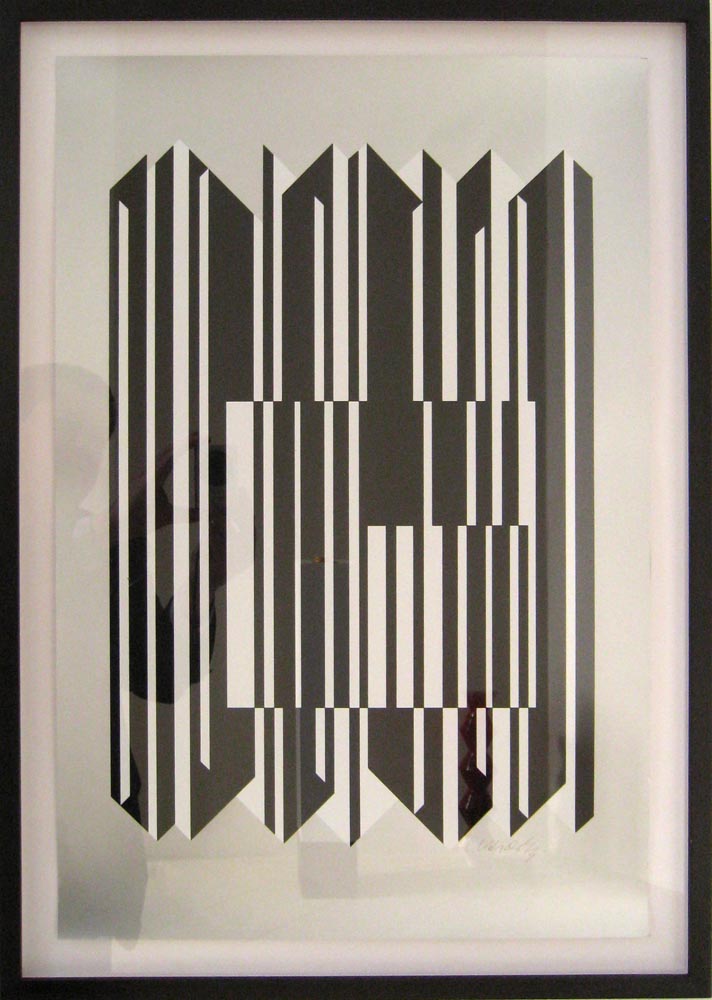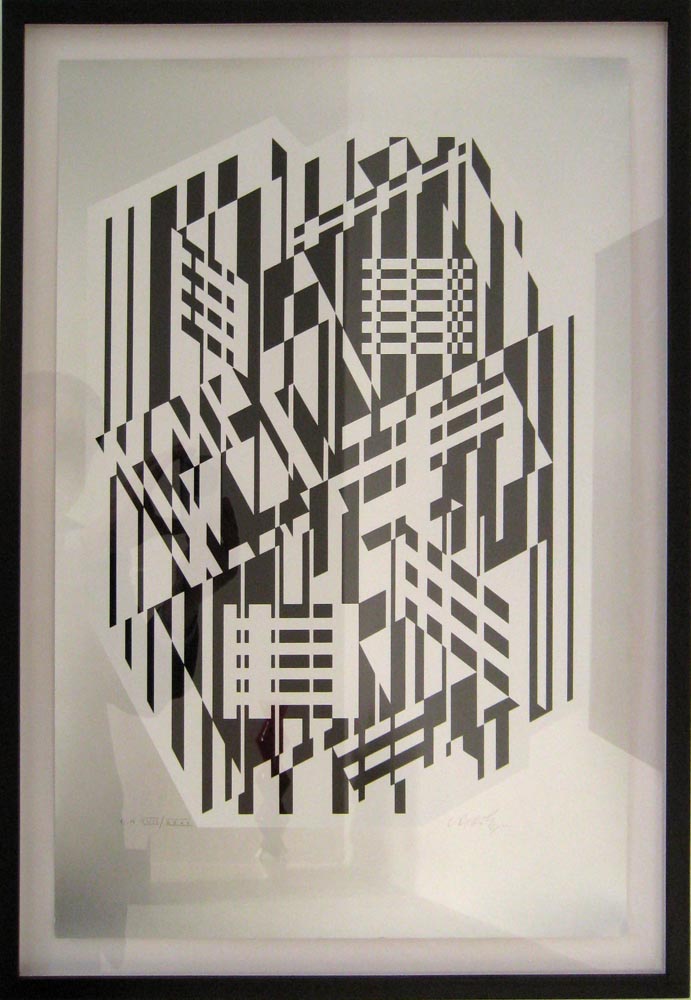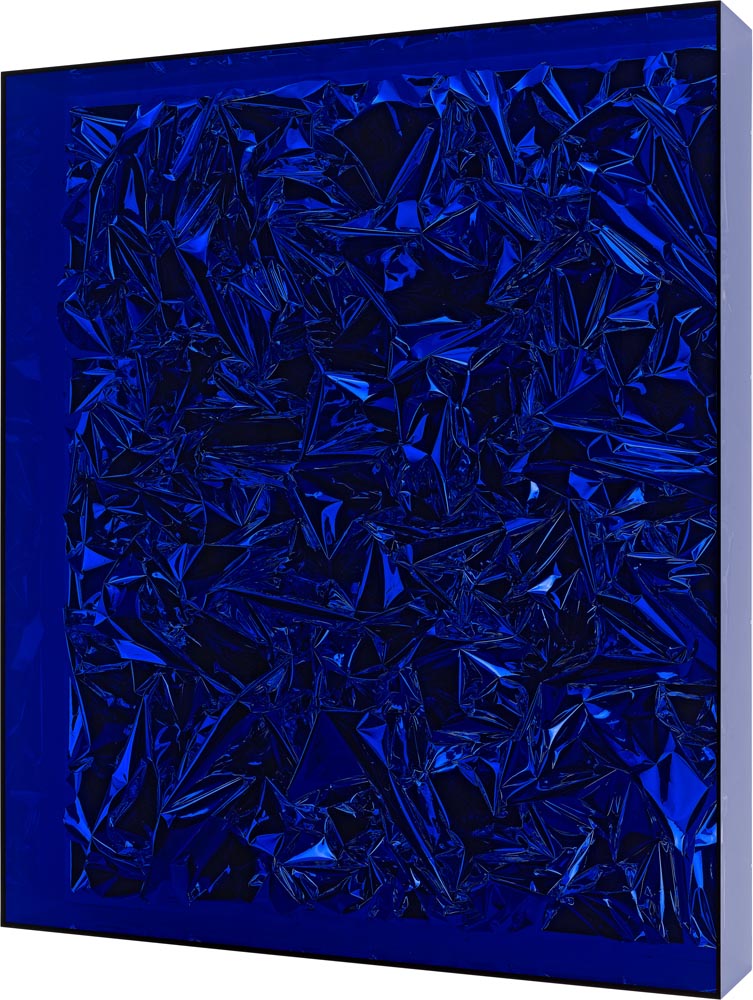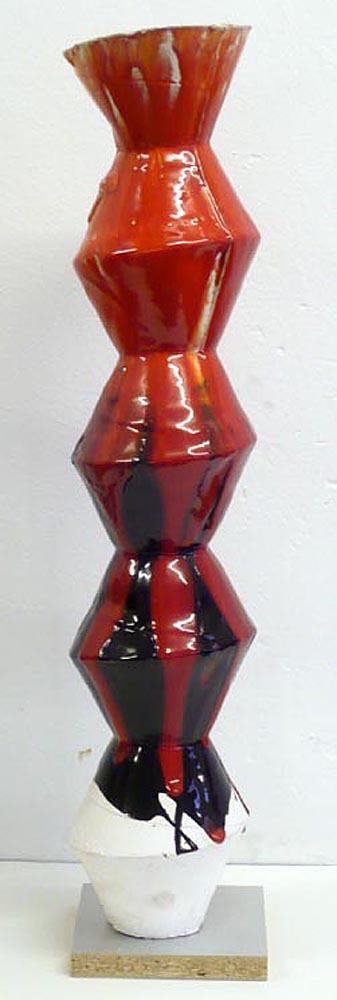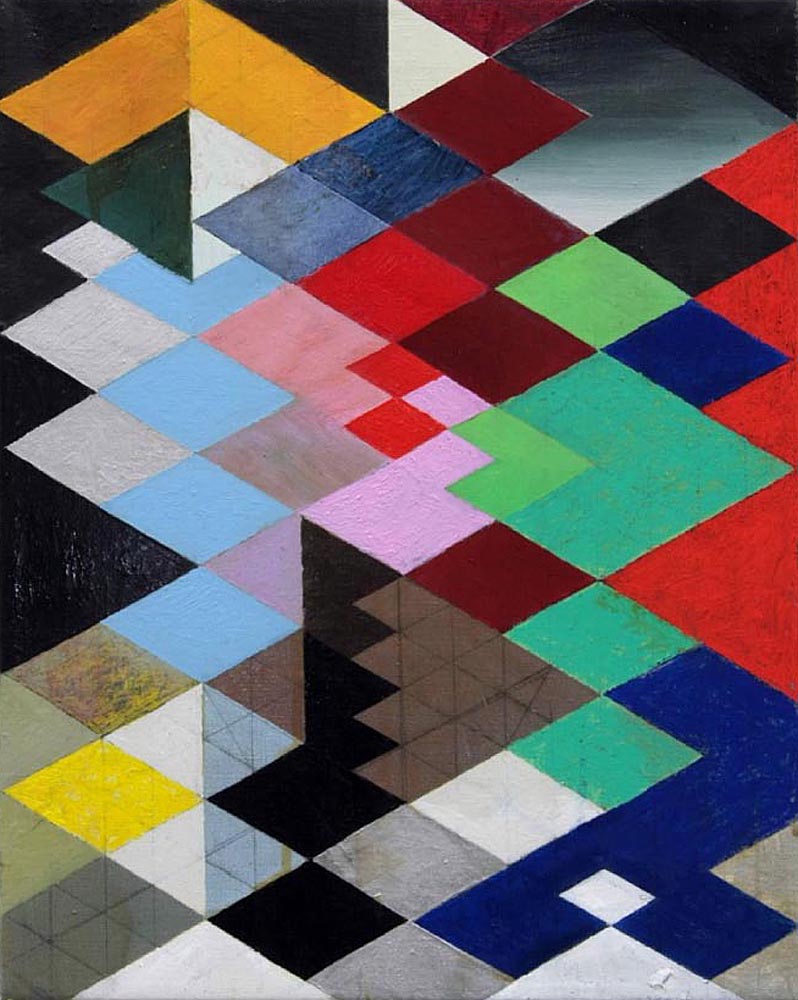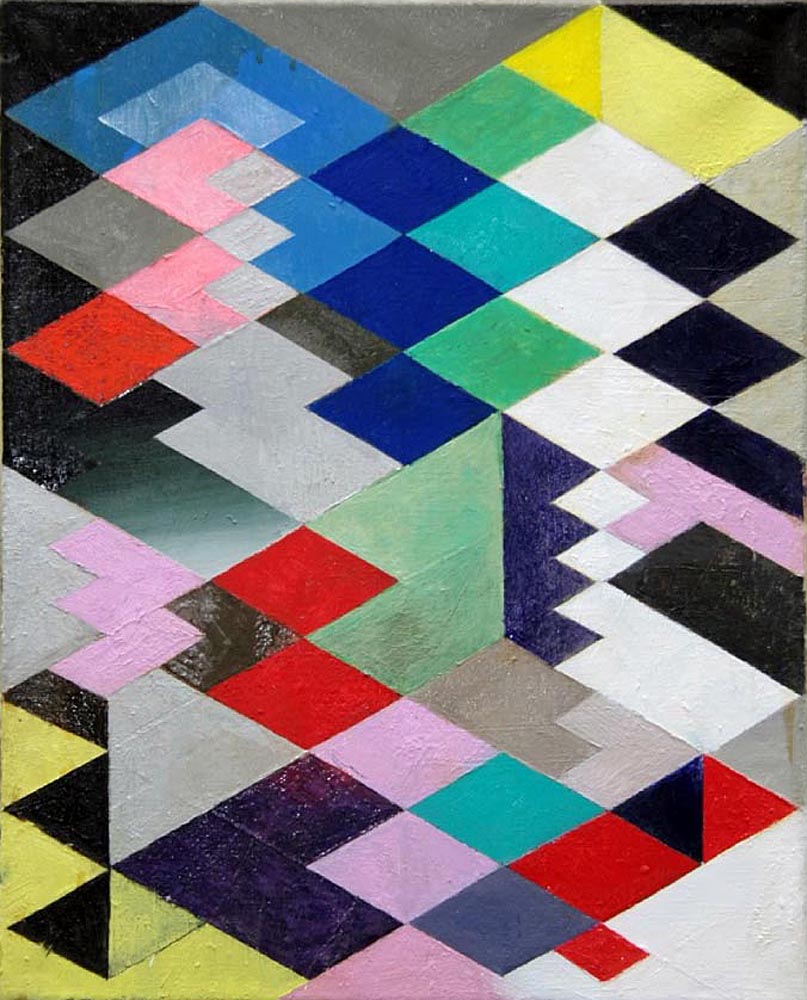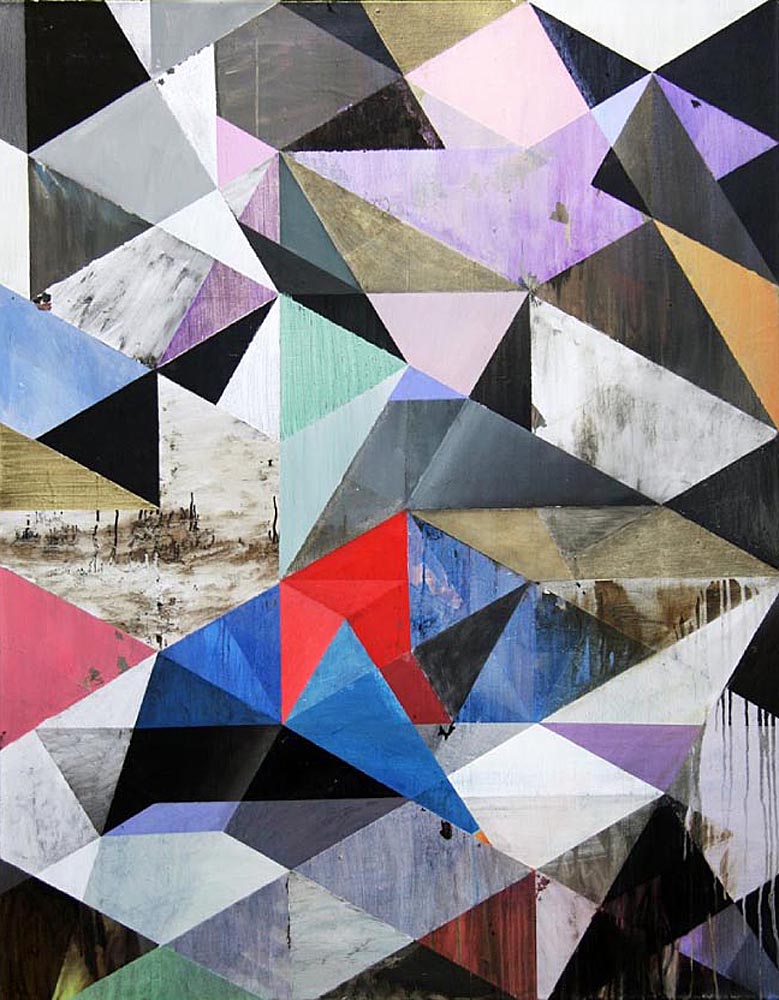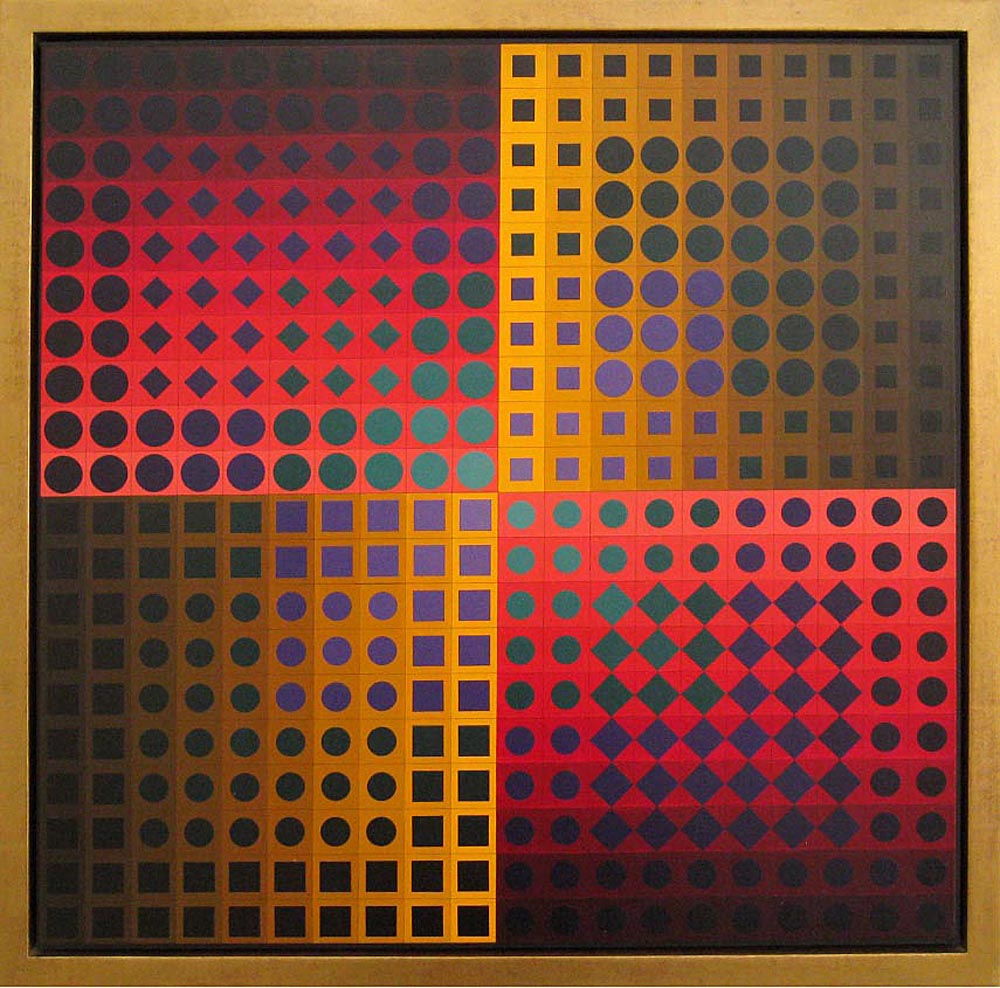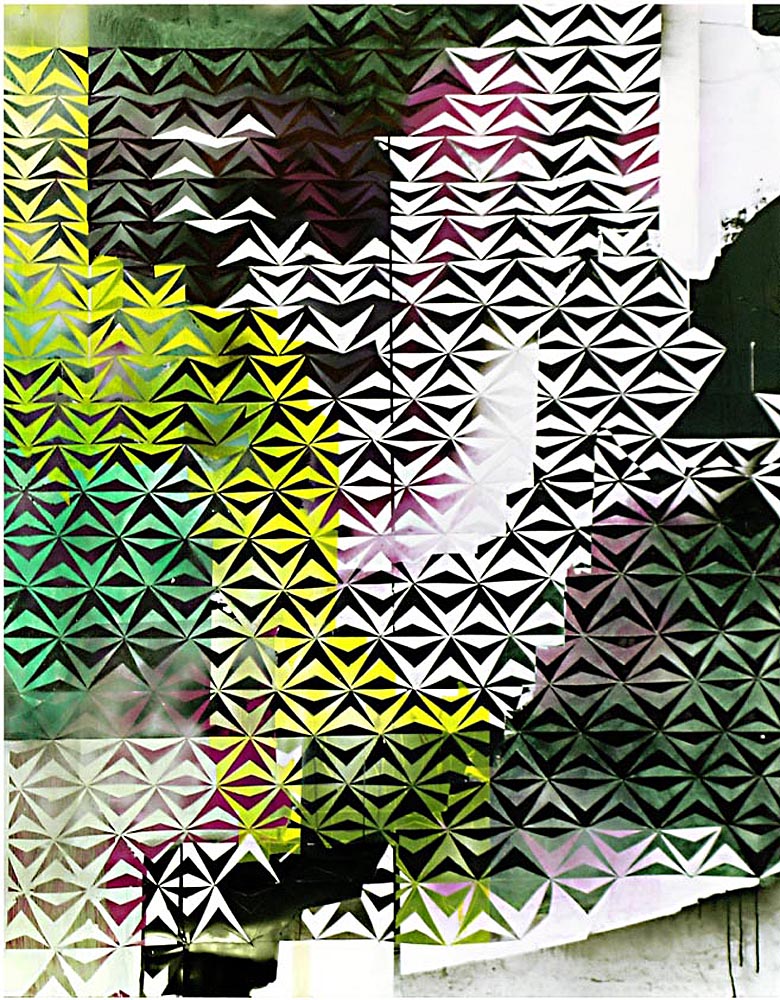UNIVERSAL STRUCTURES
Vasarely Victor (1906 – 1997)
Reyle Anselm (*1970)
Conrads Michael (*1977)
15. 3. 2013 – 30. 4. 2013, for great success extended until 31. 5. 2013
prices of paintings available upon request in the MIRO Gallery
The Universal Structures exhibition at the MIRO Gallery in Prague presents an original selection of paintings, sculptures and prints on the subject of abstract geometry and structure-based patterns. Despite the vast generational gap between Vasarely and the two young artists from Germany, “structures” is the connecting thread linking the works in this interesting confrontation.
Viktor Vasarely (1908-1997) has been shown in the Czech Republic several times, though usually just smaller works and primarily prints. Three prints present this area of his work. Visitors will certainly be attracted to three of Vasarely’s large canvases also exhibited at MIRO. His thoroughly premeditated, beautifully and skilfully elaborated structures divide the canvas into precise, geometrically regular surfaces. But gradations into clashing colours or the seemingly curving space reminiscent of Einstein’s general theory of relativity cast doubt on this basic, defined regimen. As Vasarely enjoyed questioning the two-dimensional nature of the plane, he was also attracted to real architectural space – such as his mosaic on a terrace overlooking the Mediterranean in Monte Carlo or his Vasarely Foundation building in Aix-en-Provence. In the end, even the creation of the Rubik’s Cube inspired the artist.
Vasarely was one of the most important artists of the Op-Art movement. His prime was preceded by several transitional periods, each of which was important in his development. His final Unité Plastique is the result of Vasarely’s organic development and his philosophy which he applied in art. One could jokingly say that Vasarely’s late period was marked by prizes and medals. Thus is his importance and position in modern art history.
Young German artists Anselm Reyle (b. 1970) and Michael Conrads (b. 1977) no longer had to set out to discover what had already been discovered, but in several aspects their artistic energies are developing in a similar direction. Though German visual art tends to be known as the carrier and heir to Expressionism and Neo-Expressionism, their work displays a nonfigurative and more geometric structure.
The youngest artist in the exhibition is Michael Conrads. Born in 1977, Conrads is an artist of the new millennium. He graduated from the art academy in Hamburg in 2007 and the Hanseatic city remains his principal home, his base for art and exhibitions. It is clear, though, that Conrads is a talent of European stature. His work is represented most at the Universal Structures exhibition. He presents tiny paintings – vividly colourful studies of structures in the best traditions of Bauhaus and Vasarely’s Unité Plastique – as well as vast paintings that display his sense for monumentality and architectural space. While Vasarely primarily worked with basic geometric shapes, Conrads mainly uses triangles as a dynamic element. His large-format structures are more animated, rather like genetic blueprints repeating in similar, yet carnally varying structures. The network of structures creates new structures, structures of a different order. He uses a system of collage and templates that repeat the motifs, yet they are always different, rich in a different way. The carnal nature of these geometric structures is also emphasised in his relaxed brushwork emerging from under the geometric order. His work with templates and collages portends a process of destruction and subsequent new, higher construction.
If Conrads is an outstanding talent, his Berlin-based colleague seven years his senior, Anselm Reyle, is a shining star on the international art scene. Here, to, it would be apt to mention Hamburg: Reyle has taught at the Hamburg art academy since 2009. He has been represented at numerous exhibitions and figures prominently in prestigious collections, including the Daimler Collection in Berlin and Saatchi Gallery in London. For Saatchi he created a spatial “drawing” from 119 neon colour tubes; for Dior, he offered art that was luxuriously decorative and ironically-charged. This is the very characteristic feature of Reyle’s art. Haute design, the use of bright, glossy materials and exciting colour combinations dazzle while hinting at unctuous, luxurious kitsch. Balancing on this tightrope, Reyle must prove he can turn around and demonstrate clear distance and irony. He does this by using modern waste materials – plastic, reflective surfaces, promotional graphic film and paint. He offers extensive space to connections and confrontations between the low and the spectacularly fashionable in his oeuvre, and to the delight of fans and collectors he has been able to work with and develop these concepts. The artistic sources used by Anselm Reyle are surprisingly rich. He is inspired by Cubism, Fifties abstraction, Informel, Pop Art, Minimalism and (of course) Op Art. The modern materials and modern society of this era shift all of these inspirations in Reyle’s approach to a new statement – stretched between the beauty of luxurious kitsch and artistic sanctification – about the fragile state of emancipative understanding.
Unconventional technical processes allow Reyle to make a very new and original impression, yet of one thing one can be certain: these works are undoubtedly a part of Euro-American culture, a new expression of this culture.
Petr Štěpán

